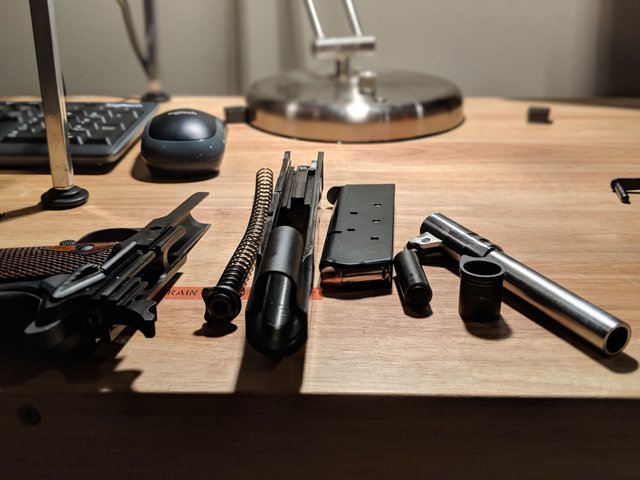
Welcome back to the five-part series, Thoughts of an Experienced Gun Owner. If you haven’t already, please take a look and review the previous three parts of the series. In part four, I’m going to present as simply as I can, disassembly (dis) & re-assembly (ass) of some common firearms including the S&W M&P 9MM, 1911, AK-47, and AR-15.
What we’ve covered so far:
Part I: Selection
Part II: Build or Buy?
Part III: Basic Safety Rules, Firing & Maintenance
My goal is to try to give the instructions as simply and as briefly as possible. Although, I may supplement the content from various videos that I found helpful as well. Why do you need to know how to disassemble and reassemble your weapon quickly and effectively? For one, you need to take it apart to clean it and perform maintenance on it. As I mentioned in previous sections, keeping your weapon clean is the key to keeping it operating smoothly in the future. I would say that at least 75% of all jams are due to not cleaning the weapon. Another reason is if something does go wrong, you can easily diagnose the problem and if it persists, have a good idea of which part needs to be replaced. I’m not really that great with cars, but the same could be said with owning a car. You want to know what’s under the hood to have a better understanding of it in general, to know what you own is quality and dependable, and if something goes wrong to easily fix it. With firearms, unlike cars, it’s a bit different, because you are going to be counting on it to save your life.
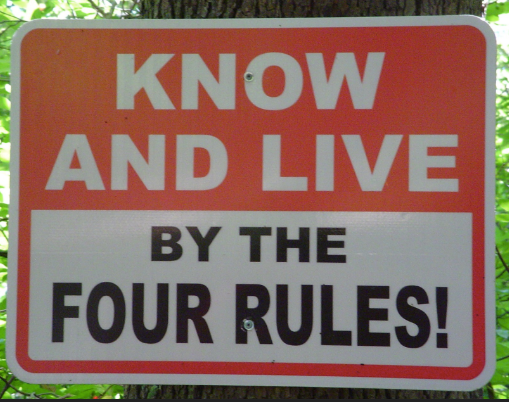
Any rationale for why you should own a firearm to protect yourself can be found in earlier sections as well as some basic safety rules I highly recommend you follow. It’s pretty important that you apply the safety rules to every aspect of gun ownership. Most recently, I’ve heard from others and have had people I know accidentally have their weapon go off while cleaning it. How that could even happen, I’m not quite sure, but after you see how easy it is to take apart a weapon, clean it, and re-assemble it, you’ll see that it’s almost near impossible to clean a loaded weapon unless of course, you are not following these basic safety rules.
With that being said, I should point out a couple of things. Always check your weapon and make sure it is unloaded (“clear it”) and remove the magazine. If you follow these two steps, there is no way that you could accidentally fire your weapon while cleaning it.
Next, after you reassemble the weapon, do a functions check in order to ensure the weapon functions properly. Functions checks will vary with firearms models. If it does not, you may need to go back and disassemble then reassemble. Something might have been missed. This is not like Ikea furniture where it’s okay that a few pieces are left over. 😉

OK, so let’s get down to it. I’ll start with the easiest firearm to break down, a Smith & Wesson M&P 9mm (very similar to a Glock or Springfield XD), move to the 1911 which is a bit more difficult, then the rifles, AR-15 and AK-47. I found it very helpful as you are taking the weapon apart to have a basic understanding of the nomenclature, what the parts are called and how they fit together. Also, while you have them apart be sure to have a cleaning kit handy, as you should give it a good clean before you put it back together.
Smith & Wesson M&P 9
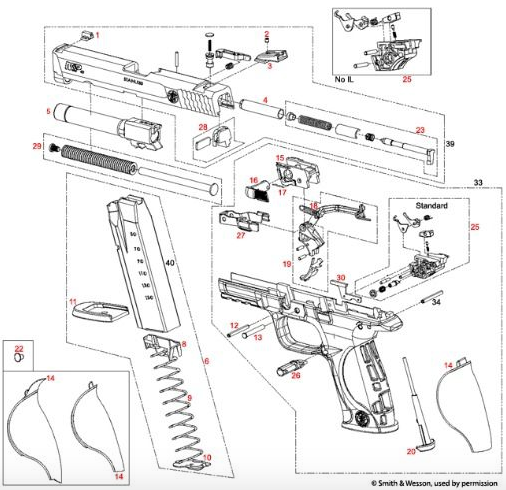
Don’t panic when you see the parts diagram. In reality, although the handgun breaks down further, you are really only going to want to disassemble into 4 working parts/assemblies; slide, frame, barrel, and magazine.
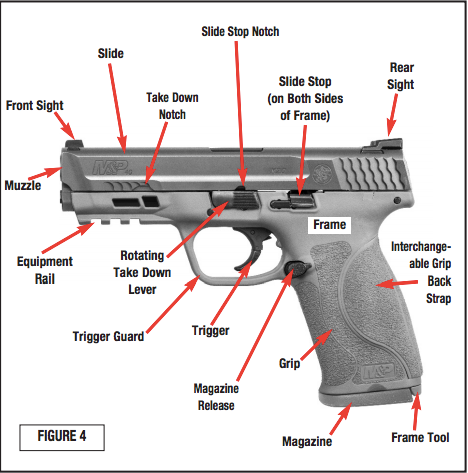
Step 1: Lock the slide back and use your finger to press down on the rotating takedown lever as shown below.
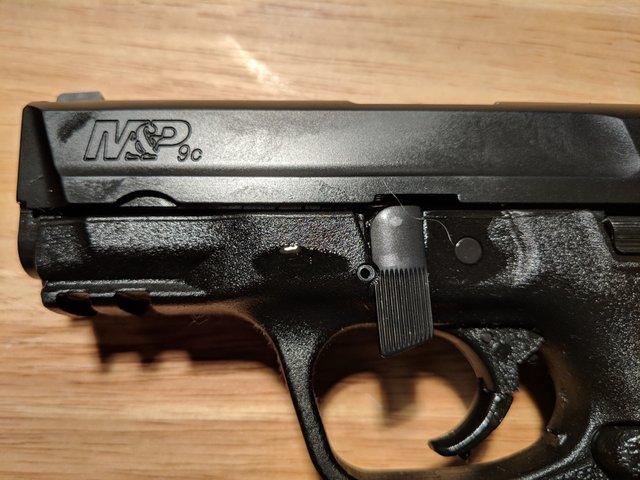
Step 2: (obviously with no round in the chamber or no magazine inserted) press the trigger while pushing the slide forward as shown below.
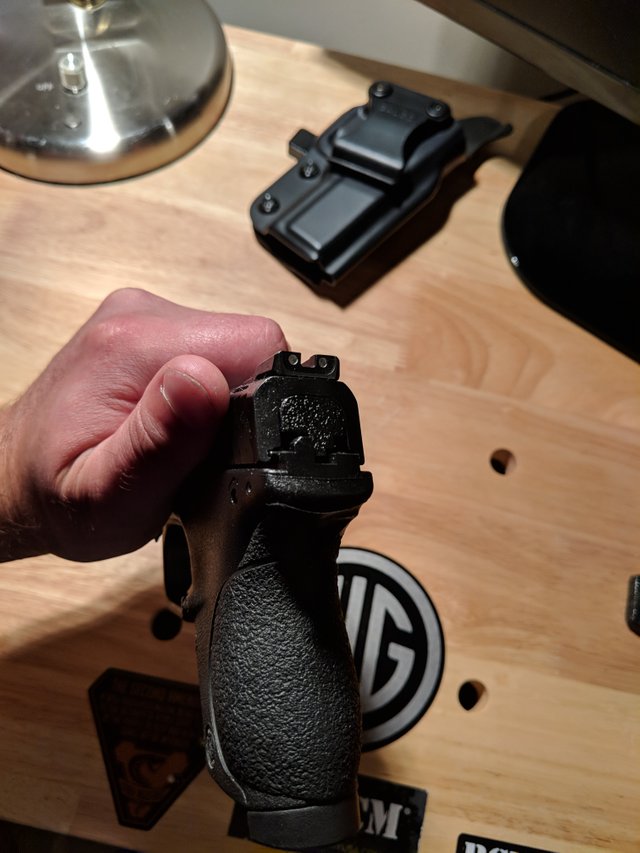
Step 3: Set the frame down on your table or workbench, this is all the further you’ll need to break down that assembly. Flip over the slide and use your finger to push down on the recoil spring and it comes out. This will cause the barrel to become lose to where you can also remove it (see below).
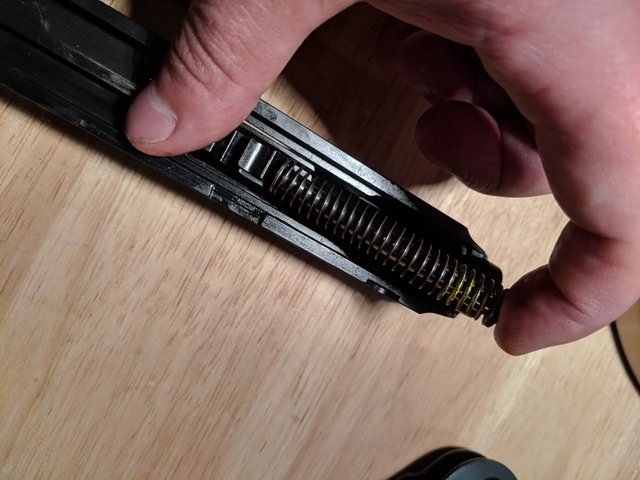
Step 4: Remove barrel and set aside with recoil spring. And that’s it! Pretty simple, huh? Probably the easiest weapon to take apart and put back together. Now to re-assemble just follow instructions in reverse. If you are having trouble, take a look at the owner’s manual located here.
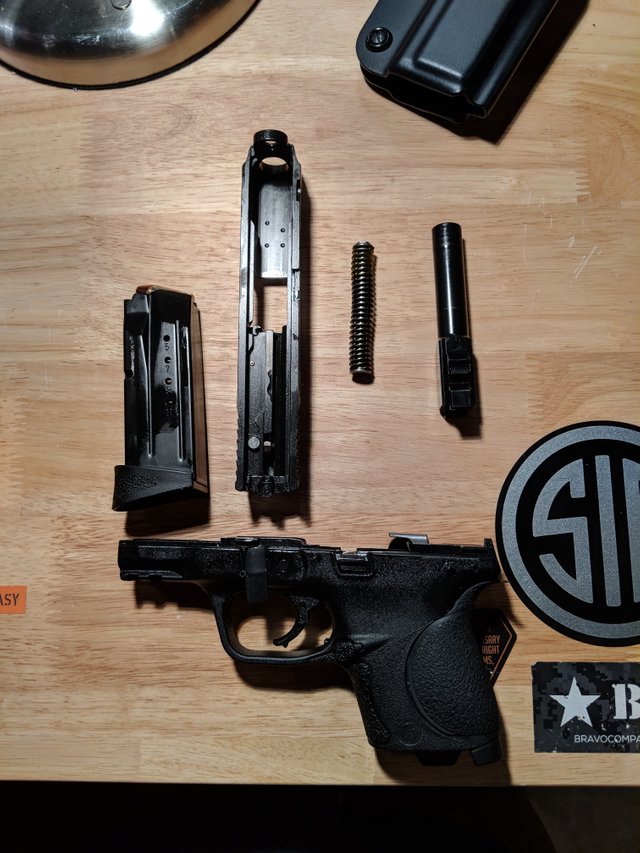
Colt Model 1911 .45
For me, this handgun was the trickiest to disassemble, but once you know a few simple steps and do it a few times, it becomes easy. Unfortunately, me not having much patience wanted to do it my way, and so I scraped some of the paint off part of the gun because I didn’t line up a notch correctly. First, go ahead and watch this video which I refer back to many times. It will definitely help. If something isn’t smoothly coming apart, there is probably a good reason for it. Don’t try to force it.
So, after you’ve watched the video. Take a look at some of the main working parts in the following diagram below.
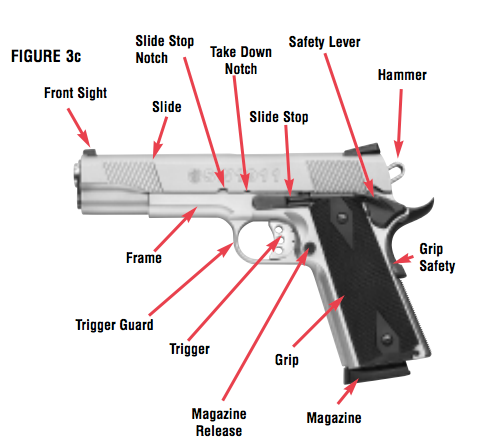
As you can see, it is pretty similar to the M&P, however, there are some differences worth noting. For one, the buffer/recoil spring is housed differently, it’s not all in one piece. This can be one of the most difficult parts when re-assembling if you don’t put it together in exactly the right order. So, here are a few steps which hopefully will guide you in taking the 1911 apart.
Step 1: Pull back the slide until the slide stop is lined up with the smaller notch (not the bigger one) as shown below.
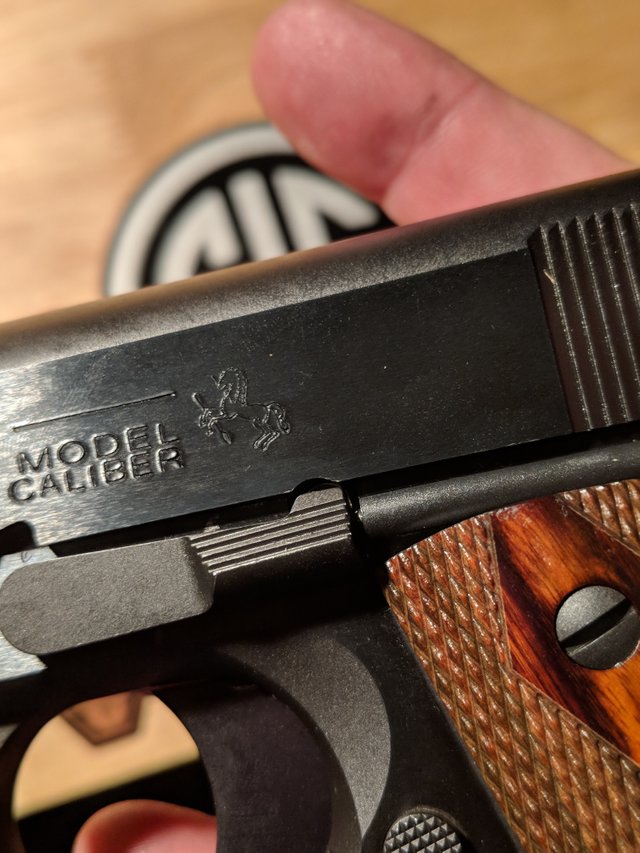
Step 2: With your right pointer finger press on the other side of the slide stop until it pops out as shown below.
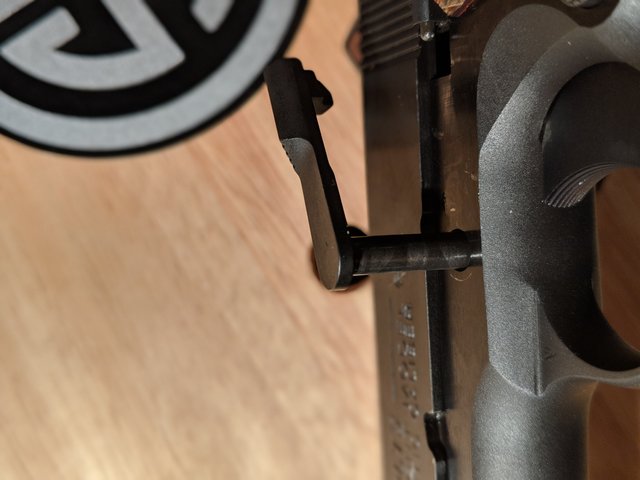
Step 3: Before completely popping out the slide stop, locate the grooved piece at the top of the gun where the barrel opening is located, known as the barrel bushing as shown below. Slowly release your finger from the recoil spring as it will release. Allow the recoil spring to expand. Then remove the slide stop.
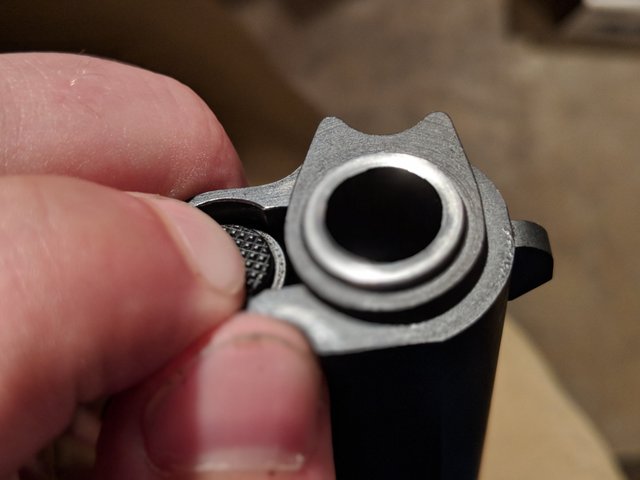
Step 4: Similar to the M&P, press the trigger (obviously while gun is unloaded, magazine NOT inserted) while pressing on the slide with your other hand. Set the recoil spring and recoil spring guide aside then remove the barrel which is removed through the front before the slide is detached. This is a little tricky. If you run into trouble, refer to the above video for guidance.
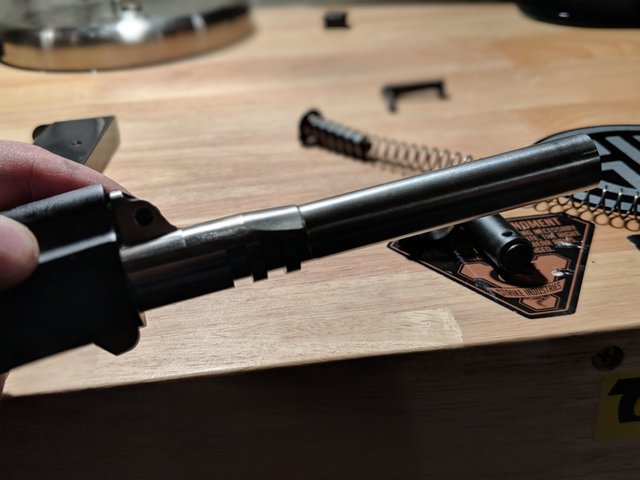
Step 5: You should have the below 6 pieces and that’s all you’ll need to break it down in order to perform adequate maintenance and cleaning. You can also break down the magazine if needed, if it’s not feeding well, but for the most part that’s it. My biggest challenge the first time I broke this down was putting it back together. Like with the M&P, it’s just a matter of remembering the steps in reverse. If you run into trouble, you can always refer to the 1911 owner’s manual. No matter if it’s a Colt, S&W, etc. the model 1911 is pretty much the same.
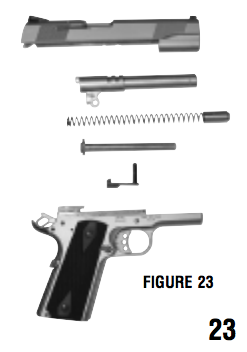
AR-15
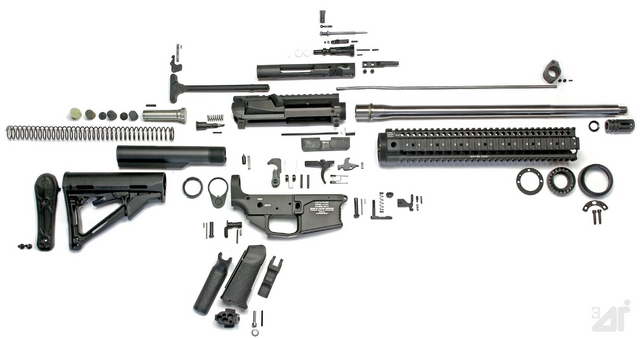
With rifles, it’s a little more complicated, but the concept is the same. Even though you can break this weapon down much further than needed, it really only needs to be broken down into several main assemblies. In a few brief steps, here’s how you break it down.
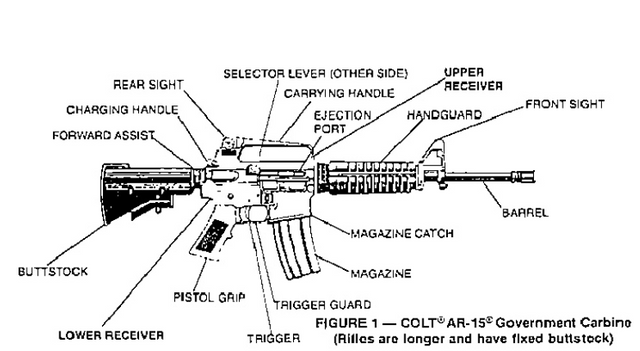
Step 1: Press firmly on the takedown pin located just above the trigger well.
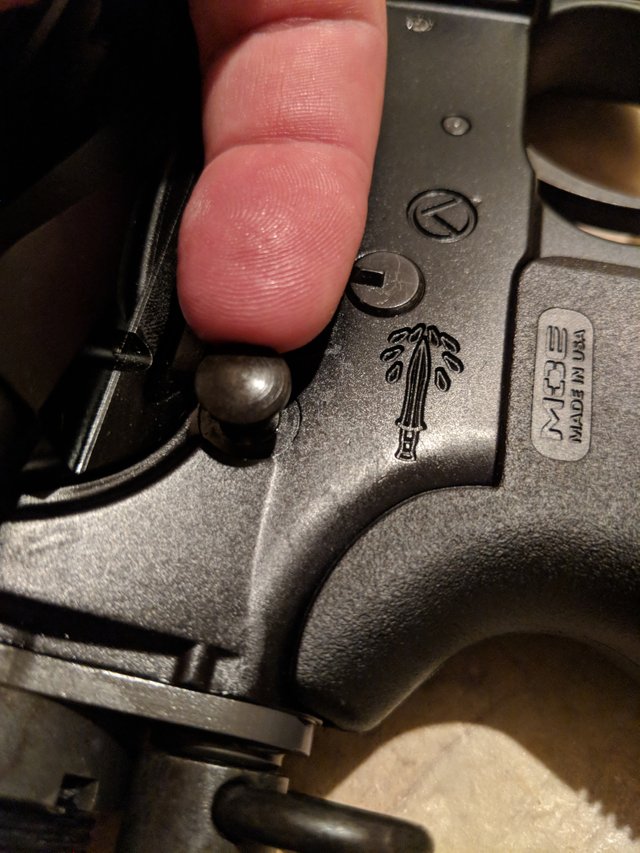
Step 2: Press pivot screw to separate the lower assembly from the upper assembly.
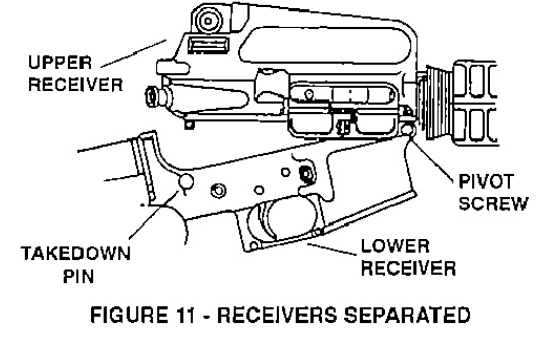
Step 3: Pull the charging handle back located at the rear of the upper assembly. Pull back and catch the bolt assembly with your other free hand.
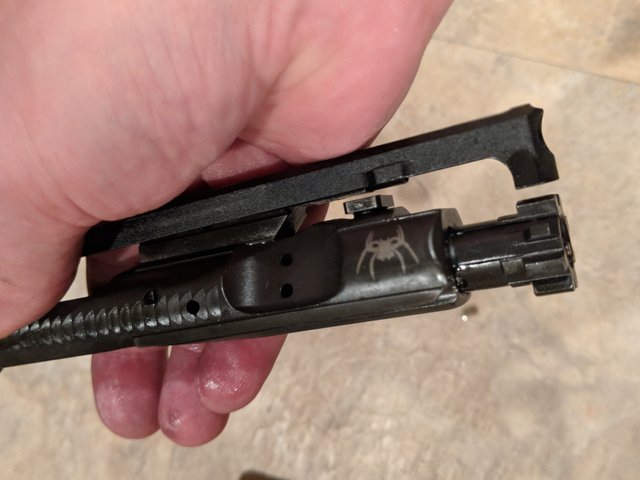
Step 4: Bolt assembly will break down into smaller parts. Set aside the upper assembly, lower assembly, and charging handle. Locate the fire pin retaining pin on the side of the bolt assembly. Using a pair of tweezers or your thumb and pointer finger, pull out this pin.
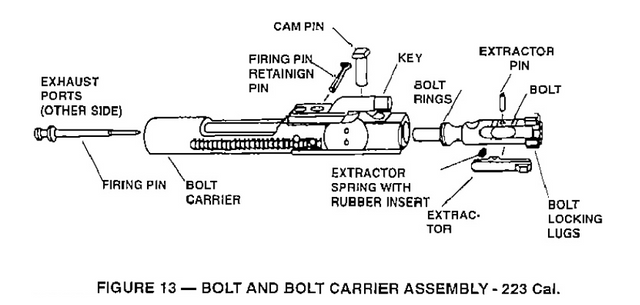
Step 5: The firing pin, bolt, bolt carrier group, and cam pin will be free. You do not need to break the bolt down any further. Most bolt carrier groups are lined with chrome so don’t clean that part with anything rough (like a bore brush). All that is needed is a quick wipe down or brush with a toothbrush and some cleaning oil. Unlike the AK, this assembly needs to be well lubed at all times in order to ensure proper/smooth firing. When you are ready to reassemble the bolt assembly, make sure you put a couple of drops of lube on the bolt itself.
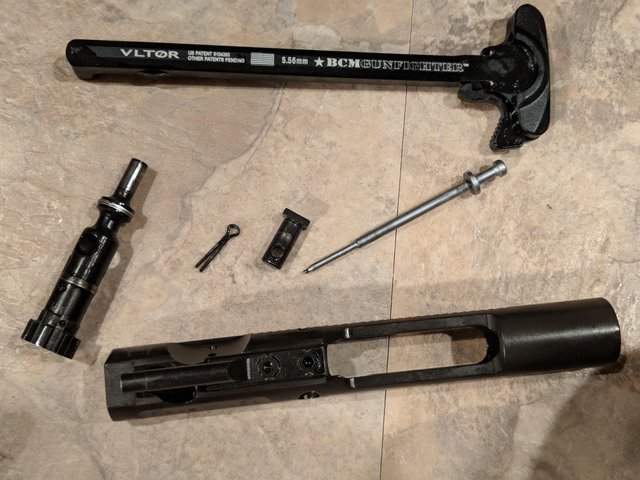
That is pretty much it for disassembly of the AR. You can also remove the buffer spring from the butt stock, although there is really no reason to. If you are experiencing problems or issues with firing, you can isolate the problem to one assembly and further disassembly might be required. Follow the steps in reverse to re assemble once you’ve given it a thorough cleaning, swabbed the barrel, etc. And, after assembling give it a quick functions check to make sure it is in good working order. As always, if you run into trouble, or are curious about some of the terminology, consult the owner’s manual.
AK-47
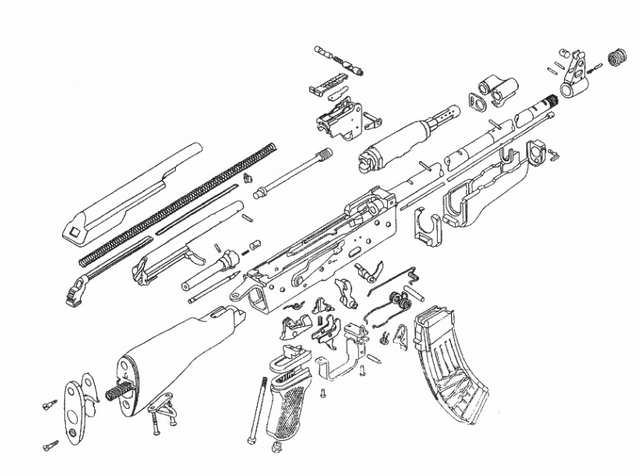
The Mikhail Kalashnikov Model 47 is probably the easiest rifle to break down and put back together. It is perhaps the most rugged, most dependable rifle in the world. You can literally drop it into the sand, mud, or other crud and it will still fire. It hardly ever needs lubed. As long as I’ve owned my Polish AK, it has never jammed. Although it is very easy to figure out, below are a few quick, simple steps to disassembly.

Step 1: Remove the dust cover.
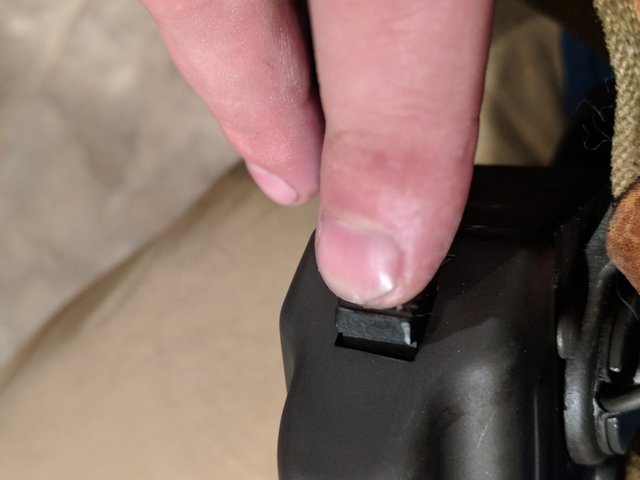
Step 2: Remove the driving spring. This will allow you to also remove the entire bolt carrier group in one step.
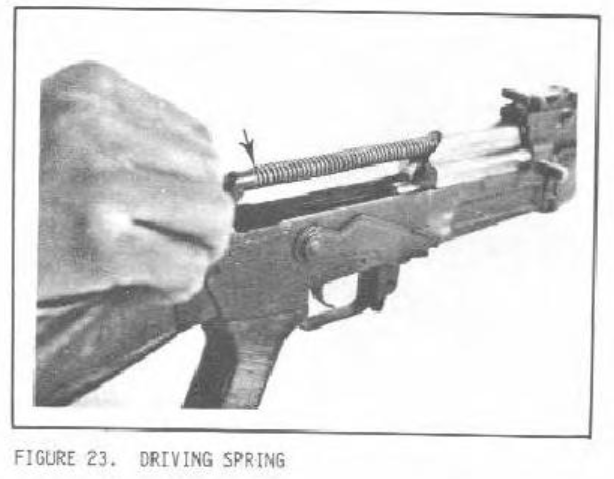
Step 3: You can also remove the hand guard by pressing on the hand guard latch. This will allow you to clean the gas tube located inside the hand guard. Another piece that comes free is the guiding rod, you can use this guiding rod to press down on the compensator in order to remove that from the rifle as well. Most AK’s come with the below compensator. Since an AK is originally an automatic weapon and the receivers are swapped out before entering the USSA in order to be “legal” (blessed by the rulers), this compensator is designed to adjust for automatic fire. You can easily swap it out for a compensator and a muzzle break / flash suppressor, which helps slightly with recoil, although you’re not going to get rid of the recoil on an AK completely. It fires a larger caliber bullet than the AR and so you’ll feel it when you fire. Although it’s powerful and dependable, in most cases it’s less accurate than it’s counterpart (the AR). As always, if you run into trouble, check out this old Army manual on the AK.
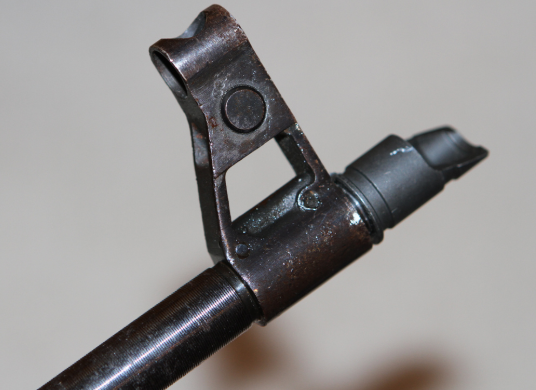

I hope you enjoyed part one of this 5 part series – Part 3 – Basic safety rules, firing, and maintenance. I hope you will continue reading the later series which I plan to write soon. Stay tuned!
Five-Part Series-
Part 1 – Selection COMPLETED
Part 2 – Build or Buy? COMPLETED
Part 3 – Basic Safety Rules, Firing & Maintenance COMPLETED
Part 4 – Dis-assembly / Re-assembly of Common Firearms (1911, S&W M&P, AR-15, AK-47) COMPLETED
Part 5 – Wrap up and recap
Also, if you like what you are reading and it has benefited you in any way, please feel free to give a voluntary contribution of bitcoin to the following address:
1dG1vhLmevVqPUp7RdjuMkUqbTmPA2fVx

Check out Liberty Under Attack Publications for tools to aid you in your self-liberation, or if you’re an author looking for a liberty-focused publisher!


